As the saying goes, there’s more than one way to skin a cat. While its safe to assume that the old adage should be interpreted more figuratively than literally, you won’t be skinning anything unless your blade is sharp enough for the task. Most of us get by with blades that are just sharp enough to get the job done, and inevitably, we find ourselves woefully unprepared for a task that requires some precision. If you’ve ever mangled a beautiful filet of salmon while trying to remove the skin, struggled to butcher a deer, carve a feather stick, or remove a nasty splinter with a dullish blade, this one’s for you.
Coincidently, there’s also more than one way to sharpen a blade, and despite the different methods of sharpening—the fundamental principles remain the same: remove metal evenly at a consistent angle to shape a rough edge and form a bur, remove said bur to reveal a sharp edge, and polish the edge on a series of decreasingly coarse surfaces.
The processes seems simple enough, but the nuance is anything but. Once you have acquired the tools and knowledge to consistently create and repair a proper edge, don’t forget the often overlooked last step in the sharpening and honing process: stropping.
Stropping is what you see your barber doing to his straight razor on the leather belt that hangs from his bench. No bonafide old-school barbershop would be complete without a leather strop, and if you’ve ever shaved with a dull razor - you’re grateful for that.
Whether its your pocket knife, kitchen knife, or hunting broadheads, stropping should be the finishing touch to your sharpening regimen. Its a similar principle to finishing a carpentry project with a series of increasingly fine sandpapers for the smoothest surface possible, or buffing and waxing your car until it is scratch free and shines. Once the rolled filaments that make up the edge of a dull blade are straightened out and finely aligned through the sharpening process, stropping polishes the blade and makes sure that the microstructure of the edge is as clean and even as possible.
You can use everything from commercially made strops, to leather scraps, canvas patches, and even denim jeans. A cloth buffing wheel on a bench grinder will also accomplish the same polishing effect. In a pinch, even your belt will do the trick. Traditional leather strops come in a variety of sizes and textures - from rough suede cowhide to smooth oiled russian leather. Many leather strops are two sided - offering both suede and smooth, or have an additional linen belt on the opposite side. They are often in the form of a hand-held paddle, or mounted flat on a block of wood.
To strop a double bevel blade (like a knife): Face the blade away from your body so that the spine is facing you, and pull the blade over the strop towards you at the same angle as you sharpened it (I like about 20-30°). At the end of the stroke, face the blade towards you, and push across the strop at the same angle. After a dozen or so passes, check your blade with the hair test. If it not only shaves, but pops hair on contact, you’re ready to go. If it doesn’t, give it a little more love until it does, or start over from the beginning of the sharpening process.
For a single bevel blade (some knives and broadheads, chisels): Follow the same process, but strop in a roughly 5:1 ratio with five strokes on the beveled side for every one stroke on the flat side.

Various abrasive stropping compounds are available on the market that assist in the polishing process, and are applied directly to the strop. These compounds help to hone and give the blade a mirror-finish. Common stropping compounds include or combine: ground diamond particles, green chromium oxide, white rouge (aluminum oxide), and jeweller's rouge (iron oxide). They come in a variety of forms, compositions, and grits, and are often put into a medium such as a wax bar, paste, spray, or even powder for application.
In theory, you could use a few cheap leather scraps and a few different compounds to achieve a similar effect as would otherwise require a collection of expensive fine stones. I’ve personally used wax chromium oxide compound to great effect, and a little one ounce bar will last a decade. That being said, you don’t need to use a compound to benefit from a strop; some folks prefer to use oil to condition the leather, or nothing at all.
Stropping won’t salvage a dull edge, but it will take a good one and make it great. If you put in the time to get it there, stropping will take it the rest of the way. If you are as obsessive about your knives as I am and need to do some fine work, think about adding a strop to your sharpening system. I’m confident you’ll notice the difference.





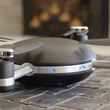
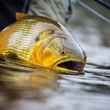






















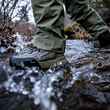

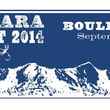
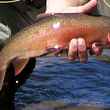
Comments
Wandy replied on Permalink
Looking at the opening photo one gets the impression that a very high angle is required to strop a mora knife. My guess is that is a stock photo otherwise the knife would be held at a more acute angle and the strop would be on some raised surface to aid this. Am I incorrect?
Cosmo Genova replied on Permalink
You are more or less correct. A more acute angle would be preferable in that case, but I staged this photo more for its quality than accuracy. I apologize if that was misleading. That being said, many people rework their bevels for different purposes, so hypothetically, someone might want an angle closer to 35 or 40 degrees than 20, etc. Thanks for the comment!
Pages